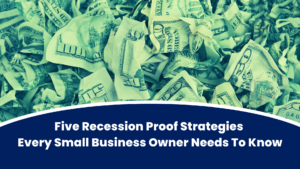Learn what to do to set your company up for success when you apply for revenue-based financing.
By Kim Folsom
In this 4-part series, we’ll take a look at the ends and outs of revenue-based financing (RBF), including what it is, an overview of some RBF investment firms, successful case studies, and how to prepare to apply for RBF if you think it’s a good fit for your company.
In this final installment of our series on revenue-based financing (RBF), I want to talk a little about what type of companies are best positioned for RBF, applying for RBF, and choosing the right investor.
First off, as I keep saying, RBF is a great tool that helps you get financing without diluting shares or losing control of your company. But it’s not for every company, and the timing is not always right.
What makes a great RBF candidate?
Your company has to have recurring revenue. This is something we stress in our bootcamps at Founders First CDC. We help you look for ways to generate recurring revenue that can be the lifeblood of a business and offer better predictability. That’s what’s needed for RBF because an investor will be expecting a monthly payment based on revenues.
So, subscription-based models are perfect for RBF. Their steady, predictable cash flow is very attractive to RBF investors. Software-as-a-Service (SaaS) companies are a great model. In fact, some RBF funders focus almost exclusively on SaaS companies. But don’t let that stop you if you are in a different industry. As RevUp Capital Co-Founder and Managing Partner Allan Tear said in a recent panel I participated on, “We like revenue no matter what container it comes in.”
Being profitably or close to profitability helps, too. It’s not a requirement, but investors like to see companies that have a cash runway, positive unit economics, and strong projected growth. When you’re profitable—or almost there—it’s a good sign that you can cover monthly payments.
You can get revenue-based financing in addition to equity financing, or in between rounds of equity financing to extend your cash or use the RBF as a bridge to profitability. But a lot of companies go for RBF as an alternative to equity financing to avoid giving up control. So, in many cases, if you’re choosing RBF over equity, it’s because you don’t want further share dilution.
Preparing to apply for RBF
When you’re applying for revenue-based funding, you’re going to need the same kind of components that you’d present to any investor. You need a pitch deck that is clear, concise, and shows RBF investors where your company has been, where it stands now, and where you want to be. Where will the RBF take you? Why should someone invest in you?
You’ll also need historical financial statements—your income statement, balance sheet, and statement of cash flows. RBF investors will want to comb through them to really understand your company and what kind of revenue it generates, so make sure they are top notch.
Additionally, a pro forma financial model is helpful to show investors what your projections would look like over the loan period. This will be hypothetical but answer questions about what your income, account balances, and cash flow would look like if you get the RBF investment you’re looking for.
Choosing the right RBF investor
This is an important decision for any company. Don’t just “take the money” because a lender is offering it. Do your homework. Ensure you’re doing business with a company that is reputable and works in your best interest.
Take a look at the lender’s portfolio to see what type of work they have done in the past. Will you fit into their portfolio? You can even do reference checks once you know who they have worked with. This is important because a lot of RBF investors also offer some form of advice and support. In fact, you really should look at your RBF funder as a partner. You want them in lockstep with you during the life of the financing.
Obviously, you’re going to want the best terms possible, too. That’s not always negotiable, but it doesn’t hurt to try, especially if you are considering a couple of different lenders. You want a lender that understands your needs and potential—and one who has a good reputation for funding on time so you’re not left hanging.
I hope you’ve enjoyed this four-part series on revenue-based financing and it’s given you some things to consider. Remember, funding is never a one-size-fits-all proposition. You can go from bootstrapped to VCs but there’s a lot in between, too. It’s a journey. There are different tools in the toolbox for different milestones. Choose the one that’s right for you at the right time. And if you have questions, don’t hesitate to get in touch with us at Founders First Capital.
Kim Folsom is the founder and CEO of Founders First Capital Partners, which has helped accelerate the success of hundreds of small, service-based, business-to-business companies since 2015. Visit our website to learn more.




